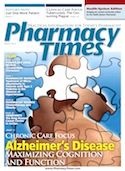Publication
Article
Pharmacy Practice in Focus: Health Systems
Just One More Patient
Health-System Edition Editor Stephen F. Eckel discusses the importance of always following best practices in preparing sterile products.

I recently had the opportunity to watch “Jekyll & Hyde: The Musical.” During a scene, Dr. Jekyll is making a presentation to the Board of Governors of St. Jude’s Hospital. He proceeds to talk about his research and sings, “I can save many lives if you give me one man!” He feels as if he needs an individual to further his experiments in the hopes that they will work. Later in the song, one of the board members, Lady Beaconsfield, replies to Dr. Jekyll, “This is a hospital, here to save lives!”
While we all recognize that our profession and the organizations in which we work are focused on healing and improving the lives of patients, are there times when we choose to avoid implementing best practices because we do not agree with them? Are they too costly, do we want to analyze them further within our organization, or we are not aware that there are guidelines to follow?
The recent tragedy associated with the New England Compounding Center (NECC) was awful in many ways. While there are many details still not known to many, what is certain is that numerous hospitals and clinics purchased and used medications from NECC. While hindsight suggests that the profession and individual hospitals did not do their due diligence with regard to rigorous inspection of the facilities, it highlights how many have turned to compounding centers to assist with their medication needs.
There are many reasons this occurs. Some stated ones include the ongoing drug shortages and the issue that the only available products are bulk chemicals, no clean room is available in their facility to prepare the product, and there is limited pharmacist expertise in sterile compounding and unawareness of how to prepare non-sterile to sterile preparations safely. Maybe another reason, although not explicitly stated, is that they are not aware or do not believe the dangers associated with poor aseptic technique.
A 2012 survey that analyzed institutional compliance with USP <797>, the guidelines focused on sterile compounding, appears to be positive.1 While there was an overall 78% reported compliance rate, a few individual areas did not fare as well. Compliance with filter integrity testing was 17%, bacterial endotoxin testing was 31%, gloved fingertip sampling was 50%, and sterility testing was 53%.
Prior to the NECC tragedy, there was probably little institutional and professional concern with this lack of compliance. However, we are all now familiar with the dangers associated with inappropriate compounding and contamination of the prepared final formulation. When we make a single product that is provided to a patient immediately after preparation, the potential harm from contamination is harder to detect compared with those batch preparations that are stored until a patient needs it.
If we use the lens of hindsight of NECC in reviewing the compliance results to this survey, our only response is that we are reckless in our approach to preparing sterile compounds and are placing our patients at risk. Even though we might have never been involved in making a contaminated product or have had any of our technicians fail an aseptic technique exam, it doesn’t mean we have not been involved in a product that could cause patient harm.
Unfortunately, many of us continue to “experiment with one more patient” when we choose not to follow best practices in preparing sterile products. Let’s hope we strive to make our hospitals places to “heal and save lives” by adhering to recommended guidelines.
Stephen F. Eckel, PharmD, MHA, BCPS, FASHP, FAPhA, is assistant director of pharmacy, University of North Carolina Hospitals and clinical assistant professor, University of North Carolina Eshelman School of Pharmacy.
References:
- The 2012 USP <797> Compliance Survey: Measuring Progress. www.pppmag.com/article/1218/October_2012_Cleanrooms_Compounding/The_2012_USP_797_Compliance_Survey_Measuring_Progress/.







